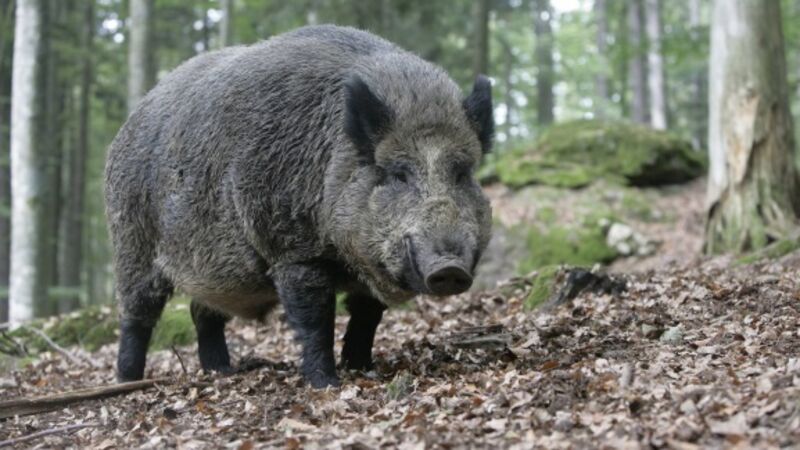Danes not sitting on fence with wild boar problem

With Donald Trump’s plans, and the shenanigans of the Brexiteers, frontier barriers are in the news. Now the Danes are building a fence along their southern border.
It won’t stop people from crossing, so there’s no need for a ‘back-stop’.
The aim is to prevent German wild boars from entering the country. Mr. Trump believes that refugees bring drugs and weapons into the United States. Danish farmers fear that immigrant boars may carry African swine fever.
Two cases of the disease, lethal to wild and domestic pigs, were identified in Belgian boars in September. Of 390 boars tested there, 294 were found to be carriers. How the virus got to Belgium isn’t known.
The disease, although highly contagious, doesn’t infect people. Of 48 boars, suffering during a Latvian outbreak of swine fever in 2015, 37 died. Eradicated in Western Europe 10 years ago, it has remained endemic in the East. No vaccine exists and infected animals can’t be treated effectively.
Boars won’t be able to jump the 1.5m high fence.
Nor can they burrow under it; the structure will be embedded half a metre in the ground. Paths won’t be obstructed, gates and cattle grids being provided where required. Ladders, incorporated into the design, will enable people to cross. The 70km-long steel barrier will cost about €12 million.
However, if it prevents the Danish domestic pig herd from infection, the money will have been well spent.
Erecting barriers is less Draconian than other options. The Poles, it’s reported, plan to cull up to 185,000 wild boars, a measure which hunters there consider excessive. French authorities have designated a ‘white zone’ along their border with Belgium. Any boar entering the zone will be shot on sight; up to 600 animals are likely to be killed. A restraining fence is to be erected there also.
Some conservationists, however, are critical of the barrier approach. They point out that African swine fever is a viral disease and physical barriers are no defence against viruses.
The bug can be carried in contaminated meat, such as sausages and other pork products, or transported on hunters’ clothing footwear or vehicles.
Animals can move along rivers, boars being able to swim. Building a fence, it’s claimed, is an expensive stunt to give the impression that politicians are taking action, rather than genuinely attempting to deal with the swine fever threat.
The wild boar, found throughout mainland Europe, much of Asia and parts of North Africa, is one of the world’s most widely distributed mammals. Its bones have been found at Mesolithic sites in Ireland, and the animal features prominently in the Fiannaíocht. However, we don’t know when it became extinct here.
The ancestor of most domestic breeds of pig, it is not endangered worldwide.
Danish and French wild boars may welcome the protection the barrier offers but there’s a downside; boar hunting will be intensified as a disease-prevention measure.
Small openings, at regular intervals along the Danish fence, will allow hares foxes and otters to cross the frontier but some wild creatures may not be so happy.
Badgers, notoriously set in their ways, don’t like their traditional paths being blocked. Will they try tunnelling under the fence?
Five wolves, including a female, were recorded in Denmark in 2017. They had arrived from Germany.
Will the barrier prevent further such arrivals? Probably not; wolves are highly intelligent and resourceful animals. They will surely find a way through.












